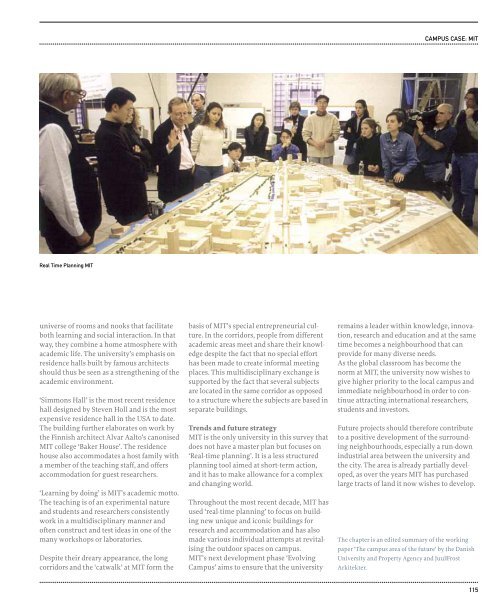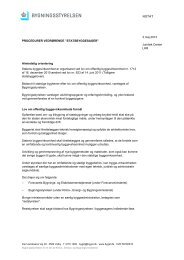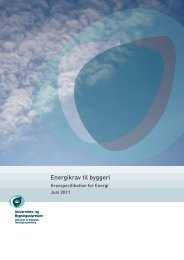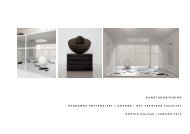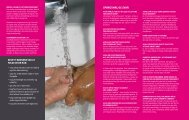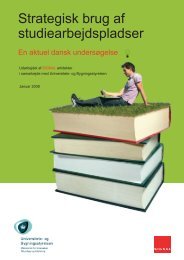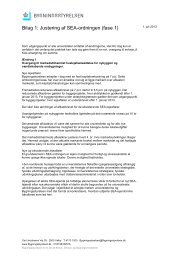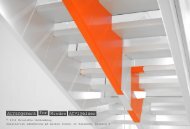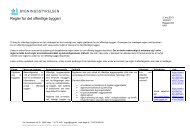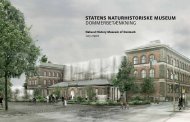Campus og studiemiljø - Bygningsstyrelsen
Campus og studiemiljø - Bygningsstyrelsen
Campus og studiemiljø - Bygningsstyrelsen
Create successful ePaper yourself
Turn your PDF publications into a flip-book with our unique Google optimized e-Paper software.
eal time planning mit<br />
universe of rooms and nooks that facilitate<br />
both learning and social interaction. In that<br />
way, they combine a home atmosphere with<br />
academic life. The university’s emphasis on<br />
residence halls built by famous architects<br />
should thus be seen as a strengthening of the<br />
academic environment.<br />
‘Simmons Hall’ is the most recent residence<br />
hall designed by Steven Holl and is the most<br />
expensive residence hall in the USA to date.<br />
The building further elaborates on work by<br />
the Finnish architect Alvar Aalto’s canonised<br />
MIT college ‘Baker House’. The residence<br />
house also accommodates a host family with<br />
a member of the teaching staff, and offers<br />
accommodation for guest researchers.<br />
‘Learning by doing’ is MIT’s academic motto.<br />
The teaching is of an experimental nature<br />
and students and researchers consistently<br />
work in a multidisciplinary manner and<br />
often construct and test ideas in one of the<br />
many workshops or laboratories.<br />
Despite their dreary appearance, the long<br />
corridors and the ‘catwalk’ at MIT form the<br />
basis of MIT’s special entrepreneurial culture.<br />
In the corridors, people from different<br />
academic areas meet and share their knowledge<br />
despite the fact that no special effort<br />
has been made to create informal meeting<br />
places. This multidisciplinary exchange is<br />
supported by the fact that several subjects<br />
are located in the same corridor as opposed<br />
to a structure where the subjects are based in<br />
separate buildings.<br />
trends and future strategy<br />
MIT is the only university in this survey that<br />
does not have a master plan but focuses on<br />
‘Real-time planning’. It is a less structured<br />
planning tool aimed at short-term action,<br />
and it has to make allowance for a complex<br />
and changing world.<br />
Throughout the most recent decade, MIT has<br />
used ‘real-time planning’ to focus on building<br />
new unique and iconic buildings for<br />
research and accommodation and has also<br />
made various individual attempts at revitalising<br />
the outdoor spaces on campus.<br />
MIT’s next development phase ‘Evolving<br />
<strong>Campus</strong>’ aims to ensure that the university<br />
<strong>Campus</strong> Case: mit<br />
remains a leader within knowledge, innovation,<br />
research and education and at the same<br />
time becomes a neighbourhood that can<br />
provide for many diverse needs.<br />
As the global classroom has become the<br />
norm at MIT, the university now wishes to<br />
give higher priority to the local campus and<br />
immediate neighbourhood in order to continue<br />
attracting international researchers,<br />
students and investors.<br />
Future projects should therefore contribute<br />
to a positive development of the surrounding<br />
neighbourhoods, especially a run-down<br />
industrial area between the university and<br />
the city. The area is already partially developed,<br />
as over the years MIT has purchased<br />
large tracts of land it now wishes to develop.<br />
The chapter is an edited summary of the working<br />
paper ‘The campus area of the future’ by the Danish<br />
University and Property Agency and Juul|Frost<br />
Arkitekter.<br />
115


